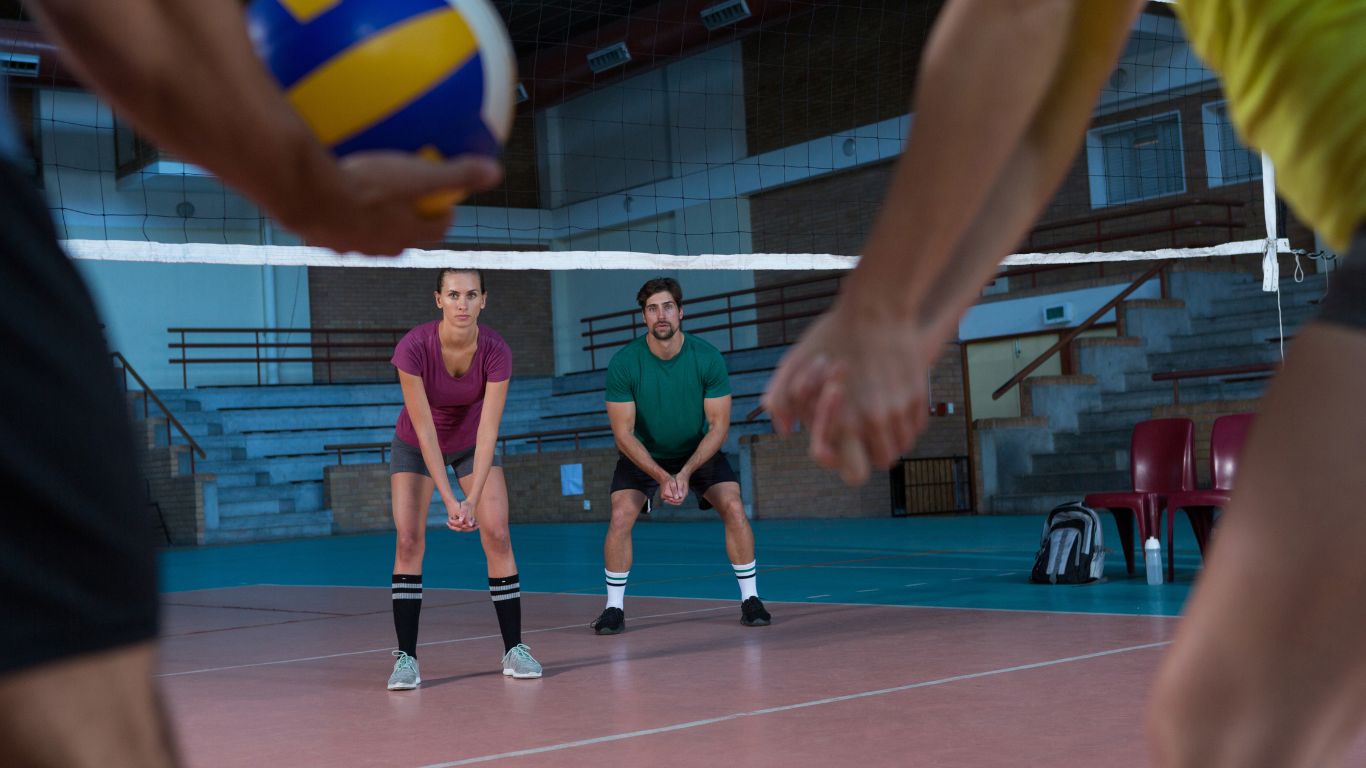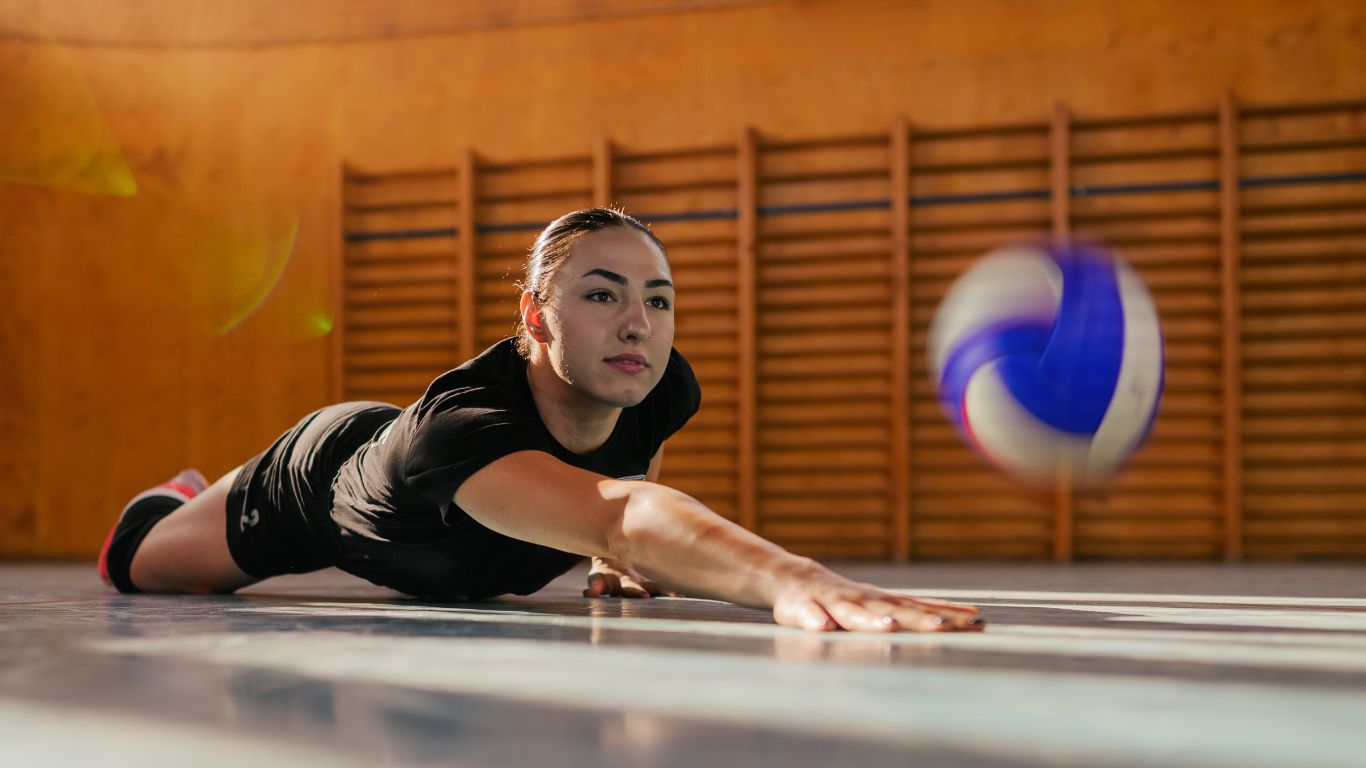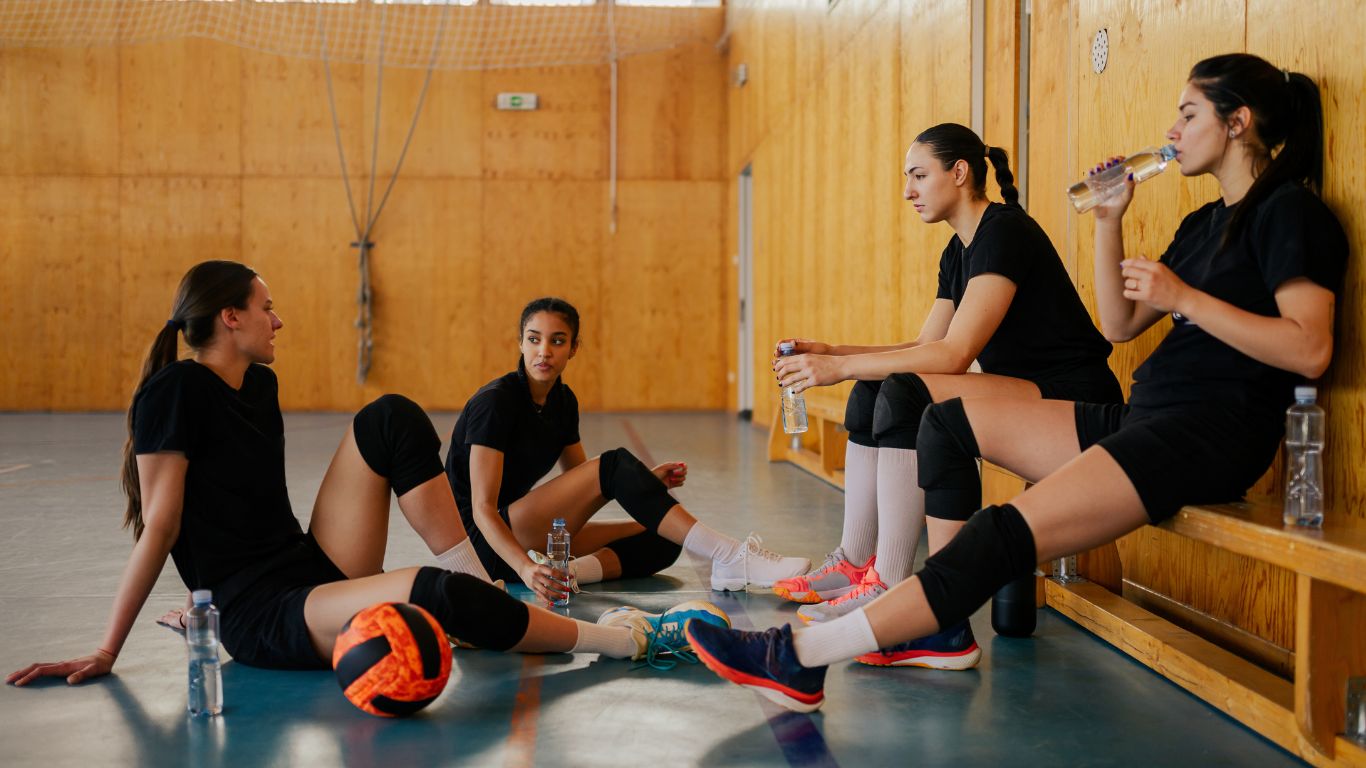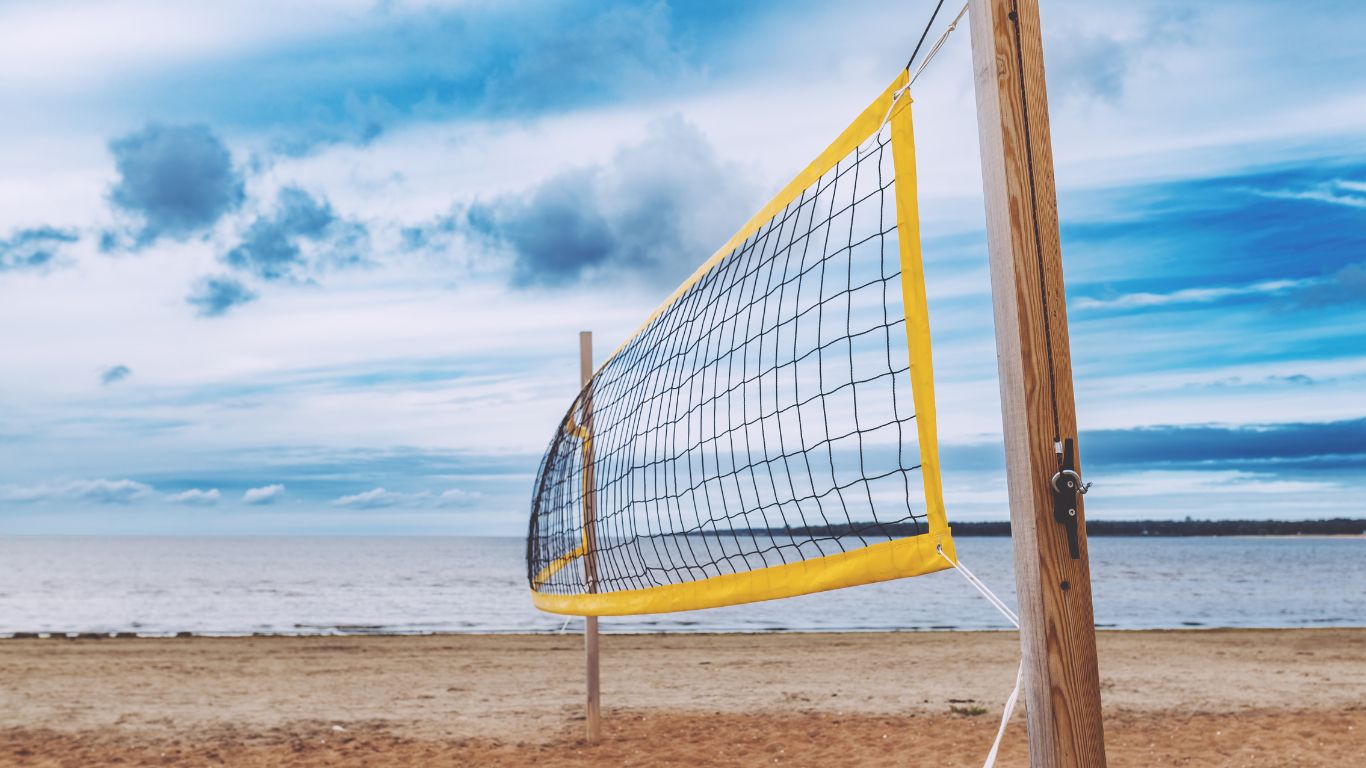Volleyball, a dynamic and fast-paced sport, demands precision and power, none more so than in the crucial moment of hitting the ball. Whether you’re an amateur player, a seasoned professional, or someone just looking to enhance their fitness in the most fun manner, understanding the finer points of the volleyball spike can transform you from a competent player to a dominating force on the court.
In this comprehensive guide, we’ll explore the various techniques involved in hitting a volleyball, share tips to elevate your game and provide you with the know-how to refine your skills and become an asset to your team.

The Fundamentals of a Perfect Spike
The volleyball spike, also known as a hit or an attack, is the most aggressive move in the game. When executed flawlessly, it can be a game-changer that scores points and sets the tone for your team’s energy and determination. Here, we break down the basics of this high-stakes maneuver.
Positioning and Approach
Before you even contact the ball, your approach and positioning are crucial. Your starting position should be a few feet behind the 10-foot line, also known as the attack line. The approach to the net typically follows a three-step or four-step pattern, allowing you to build momentum and jump with sufficient force. Remember to plant your feet firmly and keep your body low to maintain balance.
Timing the Jump
Timing is everything in volleyball, and the spike is no exception. Your jump should be explosive and coordinated with the setter’s ball release. This timing will not only help you reach the ball at its highest point but also allow you to outmaneuver blockers.
Attacking the Ball
Once airborne, your focus shifts to the ball. Stretch your hitting arm back and keep your non-hitting hand forward. This helps you balance and conceal your intentions from the opposing team. Your dominant hand should form a V-shape with your thumb and index finger to create a solid contact point with the ball.
Follow-through
A powerful spike requires a vigorous follow-through. After making contact with the ball, your hand should snap down and across your body to add spin and precision to your hit. Visualize pointing toward the direction you want the ball to go, and your follow-through will help achieve your aim.
Perfecting the Technique for Different Angles
Volleyball is a game of strategy, and hitting the ball at the right angle can confuse defenders and yield more effective results. Here, we’ll explore how to spike at various angles and why each technique is essential.
Cross-Court Spike
The cross-court spike is a favorite among players because it is effective in avoiding blockers. To execute this, aim for an imaginary line extending from your side of the court to the opposite corner. Your follow-through should guide the ball across the net, ideally out of the reach of opposing players.
Down-the-Line Spike
Opposite to the cross-court spike, the down-the-line spike is executed by aiming straight down the opposing team’s sideline. This spike is often used as a surprise tactic and requires a robust and controlled hit to ensure the ball doesn’t stray out of bounds.
Angle Adjustment
Sometimes, the best angle is not a straight line but somewhere in between. Adjusting the angle of your spike on the fly can take practice and good judgment. Learning to manipulate the trajectory of the ball mid-air adds an extra layer of unpredictability to your attacks, making them harder for defenders to anticipate and defend against.
Overcoming Common Spike Challenges
Even the most seasoned players face challenges when spiking the volleyball. Whether overcoming a defensive wall or dealing with a less-than-ideal set, understanding how to manage these hurdles can turn a potentially difficult situation into a scoring opportunity.
Hitting High Balls
The higher the ball, the more challenging it is to control. When spiking high balls, adjusting your timing and swing to match the ball’s trajectory is essential. This might require you to start your approach earlier or to jump higher, ensuring the best possible contact with the ball.
Handling Low or Quick Sets
Low or quick sets can catch you off guard, but they also catch your opponents off guard. To handle these, fast reflexes and a rapid approach can help you get to the ball quickly. Keep your knees bent and your body ready to pounce, and use a short, snappy arm swing to make a quick and decisive hit.
Dealing with Double Blocks
Double blocks are a common challenge for hitters. To overcome them, look for gaps or weaknesses in the block, attempt a tool of the hands to score a point, or ensure a continuation of play. It’s also helpful to practice hitting around blockers during drills to sharpen your precision.
Enhancing Your Power and Timing
Becoming a better volleyball spiker involves continuous work on both power and timing. The former ensures you have the strength and agility to execute various hits, while the latter will help you sync your moves with your team.
Strength and Conditioning
To increase your power, focus on strength training exercises that target your core, leg muscles, and upper body. Squats, lunges, and plyometric drills can help enhance your vertical jump, while exercises like bench presses, pull-ups, and shoulder presses can build arm and shoulder strength.
Practice Makes Perfect Timing
Practicing with your team is the best way to improve your timing. Drills involving the setter and other spikers can simulate game situations, allowing you to understand better the timing required for a perfect spike. Set up various drills with different tempos to help you acclimate to various timing challenges.
Spike with Confidence and Mental Preparation
Confidence is a powerful ally on the volleyball court. The more confident you are in your abilities, the more effective you will be as a spiker. Mental preparation helps you maintain focus and composure, even in the heat of a close match.
Visualize Success
Before each match or practice, take a moment to visualize successful spikes. Imagine yourself hitting the ball with power and accuracy, and see how it contributes to your team’s momentum and, ultimately, its victory.
Adopt a Routine
Developing a pre-spike routine can calm your nerves and prepare you for the task. This routine might involve taking deep breaths, focusing on the ball, or repeating a calming mantra. Having a sequence you follow before every spike can help reinforce a success mindset.
Stay Composed
No matter the outcome of a spike, it’s important to stay composed. Treat every point, positive or negative, as a learning opportunity. Analyze what went well and what you can improve, and use that feedback to refine your approach for the next opportunity.
Frequently Asked Questions.
1. How do I position my hands when hitting a volleyball?
Keep your hands together with your thumbs pointing downward, creating a platform for the ball to hit.
2. What is the best way to approach the ball before hitting it?
Move quickly towards the ball in a controlled manner, keeping your eyes on it at all times.
3. How important is timing when hitting a volleyball?
Timing is crucial when hitting a volleyball; contact the ball at the highest point of your reach.
4. Should I jump when hitting a volleyball?
Yes, jumping increases your power and reach when hitting a volleyball, giving you more control over the shot.
5. Is it necessary to follow through after hitting a volleyball?
Yes, following through with your swing helps generate power and accuracy in your hit.
6. What are some common mistakes to avoid when hitting a volleyball?
Avoid swinging too early or late, not watching the ball closely, and failing to communicate with teammates.
7. How can I improve my arm strength for hitting a volleyball?
Work on exercises that target your shoulders, arms, and core muscles to improve your arm strength for hitting the ball effectively.
8. What should I do if I miss the ball when trying to hit it?
Focus on improving your timing and footwork, practice consistently, and seek guidance from coaches or experienced players for tips on improving your technique.
Conclusion
Hitting a volleyball is an art that combines technical skill with physical prowess and mental focus. It is a skill continuously honed; even the best players can improve with exemplary dedication and practice. Whether preparing for your next match, coaching a team, or just looking to up your fitness game, the knowledge and techniques shared in this guide will help you spike your way to success on the volleyball court. Remember, the key to a perfect spike is not just in the execution but in mastering all elements that lead up to it. Keep practicing, keep learning, and most importantly, enjoy the game!









